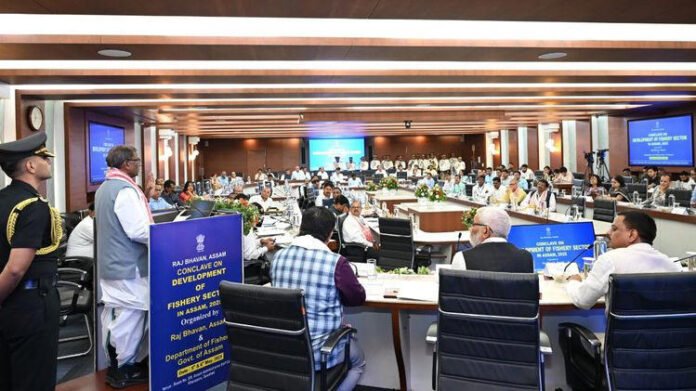The fisheries sector in Assam is witnessing a remarkable transformation as the state government introduces a series of development initiatives aimed at boosting production, enhancing livelihood opportunities, and ensuring sustainable growth. With Assam’s vast water resources and a strong tradition of fish consumption, the sector holds immense potential for economic advancement and food security.
Expanding Potential of Fish Farming in Assam
Assam boasts over 4.7 lakh hectares of water bodies, including rivers, ponds, beels (wetlands), and reservoirs. Despite this natural abundance, the state has historically struggled to meet its fish consumption demands, often relying on imports from Andhra Pradesh and West Bengal. However, recent years have seen a renewed focus on fish farming in Assam, with an emphasis on modern aquaculture techniques and localized production.
Read More: Assam Seeks Japanese Investments as Speaker Nukaga Fukushiro Visits
The state government’s Fisheries Department, under the leadership of proactive officials and aligned with national initiatives like the Pradhan Mantri Matsya Sampada Yojana (PMMSY), has set ambitious targets for self-sufficiency in fish production. The aim is to not only meet local demand but also to make Assam a key player in the aquaculture industry of Northeast India.
Key Development Programs Driving Growth
A major turning point for the sector came with the announcement of targeted developmental schemes across 650 villages identified as fisheries development zones. These villages are set to receive infrastructural support, training in advanced aquaculture practices, and subsidies for setting up hatcheries, feed mills, and cold storage units.
Some highlights of the initiatives include:
- Integrated Fish Farming Systems (IFFS): Promoting polyculture and integrated models combining fish with poultry, livestock, or horticulture to increase farm income.
- Capacity Building: Training programs for fish farmers, women SHGs, and rural youth to enhance their technical knowledge and entrepreneurship skills.
- Seed and Feed Supply Chains: Developing reliable networks for high-quality fish seed and nutritionally balanced feed to improve productivity.
Additionally, cluster-based fish farming models are being introduced to encourage community-based aquaculture and ensure economies of scale.
Read More: Saikia Accuses Assam Election Panel, Police of Bias Toward BJP
Focus on Sustainability and Quality
Sustainable fish production is a cornerstone of Assam’s fisheries roadmap. Environmental concerns such as overfishing, water pollution, and loss of wetland ecosystems are being addressed through strict regulations and awareness campaigns. Farmers are being encouraged to adopt eco-friendly practices, including the use of biofloc technology and Recirculating Aquaculture Systems (RAS), which minimize water usage and waste output.
To maintain product quality and safety, the government is also working towards setting up fish processing units and certification systems, ensuring that Assam’s fish products meet both domestic and export standards.
Economic and Social Impact
The fisheries sector in Assam is a significant source of livelihood, especially for rural communities, Scheduled Tribes, and women. By creating jobs in hatcheries, input supply chains, retail, and logistics, the sector has the potential to lift thousands out of poverty. The renewed push for growth is expected to increase the state’s fish production capacity from around 3.5 lakh metric tonnes to over 5 lakh metric tonnes in the next five years.
Moreover, promoting fisheries development in Assam aligns with broader goals of food security, nutrition enhancement, and rural empowerment.
With a strategic focus on technology, sustainability, and skill development, Assam’s fisheries sector is on the brink of a major transformation. The state’s proactive approach is not only set to reduce dependency on fish imports but also position Assam as a leader in aquaculture in Northeast India. Continued investment and community participation will be key to ensuring long-term success and inclusive growth in the years ahead.

